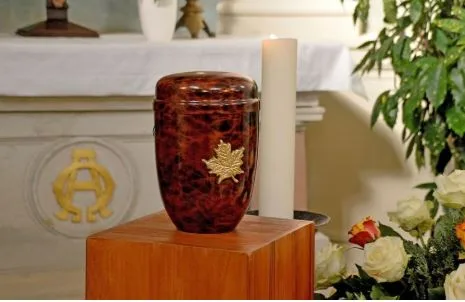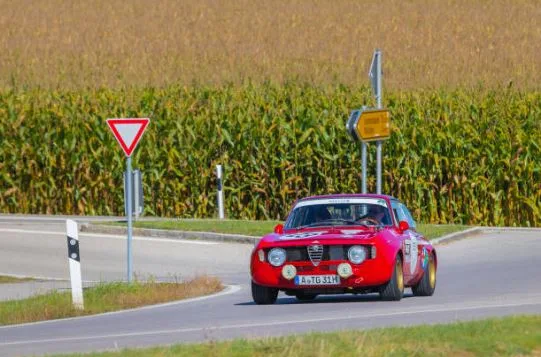Demystifying the Cremation Process: What Actually Happens Behind the Scenes?
Cremation has grown significantly in popularity over the past few decades, with more individuals and families choosing it as a dignified, cost-effective, and environmentally-conscious alternative to traditional burial. Despite its widespread use, many people remain uncertain or even uneasy about what the cremation process actually involves. This blog will walk you through the journey of cremation—from start to finish—highlighting each step, the science behind it, and the care taken to ensure respect and dignity.
Understanding the Basics: What is Cremation?
At its core, cremation is the process of reducing a human body to bone fragments through the application of high heat. These fragments are then processed into what we commonly refer to as “ashes,” although they are technically pulverized bone. The cremation process usually takes place in a specialized facility called a crematory, which houses a cremation chamber or retort.
Unlike burial, which leaves the body largely intact, cremation offers a more transient, symbolic farewell. The resulting remains can be scattered, kept in urns, incorporated into keepsakes, or buried in memorial gardens or columbariums.
Step 1: Identification and Authorization
Before the cremation process can begin, several legal and administrative steps must be completed to ensure accuracy, accountability, and transparency:
- Authorization: Legal next-of-kin must sign a cremation authorization form. This document allows the crematory to perform the procedure and confirms the identity of the deceased.
- Identification: A physical ID tag is typically assigned to the deceased and accompanies them throughout the entire process. This ensures the ashes returned to the family are those of their loved one—an essential measure for trust and integrity.
In some states or regions, a mandatory waiting period (usually 24 to 48 hours) is required before cremation can occur, to ensure there are no pending investigations or concerns regarding the cause of death.
Step 2: Preparation of the Body
Once legal permissions are granted, the deceased is prepared for cremation. While embalming is not required, families may request it if a public viewing or visitation is planned.
Here’s what typically happens:
- Removal of Medical Devices: Items like pacemakers, defibrillators, or prosthetic limbs with batteries must be removed. These can explode under high heat, posing safety risks to crematory staff and equipment.
- Personal Belongings: Jewelry and other personal effects are removed and returned to the family or handled according to their wishes.
- Placement in a Cremation Container: The body is placed in a rigid, combustible container—usually made of cardboard, wood, or plywood—that meets state and facility requirements. This container facilitates safe and dignified handling of the body.
Step 3: The Cremation Process Begins
The actual cremation process takes place in a specially designed, industrial-grade furnace known as a cremation chamber or retort. Here’s what happens:
Preheating the Chamber
Before introducing the body, the chamber is preheated to a temperature between 1,400 and 1,800 degrees Fahrenheit (760–982°C). The high heat ensures efficient combustion.
Placing the Container
The cremation container is then carefully placed inside the chamber using a hydraulic lift or automated system. The door is sealed, and the intense heat begins to consume the organic material.
Incineration
Contrary to popular belief, cremation doesn’t reduce a body to “ashes” instantly. Instead, the heat incinerates soft tissues like skin and organs within the first 30–60 minutes. The bones, which are more durable, remain for the duration of the 1.5 to 3-hour process.
Airflow, temperature, and timing are controlled with precision throughout. Once completed, only dry bone fragments and non-organic residue (like metal dental fillings or surgical pins) remain.
Step 4: Cooling and Processing the Remains
After the cremation is complete, the remains are allowed to cool naturally for 30 minutes to an hour inside the chamber. These cooled remains are then collected and processed further.
Metal Recovery
Any remaining metallic elements are separated out using magnets or manual sorting. These materials are typically recycled according to environmental regulations and ethical guidelines.
Pulverization
The remaining bone fragments are transferred into a machine called a cremulator. This device grinds them down into a fine, sand-like powder—what we commonly refer to as “ashes.”
The average weight of cremated remains ranges between 3 to 7 pounds (1.4 to 3.2 kg), depending on the individual’s body composition.
Step 5: Packaging and Returning the Remains
Once processed, the ashes are placed in a temporary container or a decorative urn selected by the family. Labels, documentation, and identification tags accompany the urn to ensure flawless tracking.
Families may then choose one of several options:
- Keep the remains at home in an urn or keepsake
- Scatter the ashes in a meaningful location (pending local regulations)
- Bury or entomb them in a cemetery or columbarium
- Use them for memorial art, such as glass sculpture, tattoos, or eco-burials (like tree pods or coral reefs)
Environmental and Ethical Considerations
Modern cremation practices have become increasingly eco-conscious:
- Filtration systems capture emissions and particulates during the cremation process.
- Energy-efficient retorts reduce fuel consumption and environmental impact.
- Water-based cremation (alkaline hydrolysis or resomation) is an emerging method that uses water and lye instead of fire, producing fewer emissions.
Transparency and ethical responsibility are top priorities in reputable crematories. Many now allow families to witness the start of the cremation if desired—a practice especially common in some cultures and religious communities.
Common Misconceptions About the Cremation Process
- All Ashes Look Alike
In reality, the color and texture of cremated remains can vary depending on temperature, bone structure, and any metal residue present. They typically appear gray or white, with a sandy consistency.
- Ashes Include Remains from Other People
This is a major concern for many, but strict tracking, labeling, and chamber-cleaning protocols ensure that only one individual is cremated at a time, and the ashes returned are solely theirs.
- Cremation is the “Easy Way Out”
Many assume cremation lacks the ceremony or closure of a traditional funeral. In truth, families can still hold full memorial services, viewings, or religious rites. Cremation simply provides more flexibility in timing and logistics.
Cremation and Religion: Compatibility and Beliefs
While some religious traditions prohibit or discourage cremation, many now accept it:
- Christianity: Most denominations now allow cremation, though some prefer burial.
- Buddhism and Hinduism: Cremation is customary and spiritually symbolic.
- Islam and Orthodox Judaism: Traditionally prohibit cremation, emphasizing burial.
- Secular and humanist views tend to embrace cremation for its simplicity and environmental benefits.
As societal norms evolve, the cremation process continues to be adapted to accommodate diverse beliefs, customs, and needs.
Final Thoughts
Cremation is more than just a practical end-of-life choice; it is a process steeped in science, ethics, and reverence. Understanding what goes on behind the scenes can bring comfort, peace of mind, and a deeper appreciation for how we honor life’s final chapter.
Whether you’re pre-planning for yourself or making arrangements for a loved one, having clarity about the cremation process empowers you to make informed, respectful decisions that align with your values.





